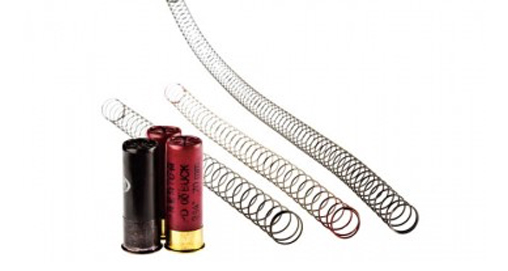
Die-hard AR-15 shooters have come to understand one undeniable fact about America's rifle: the magazine system is its major weakness. Run a standard G.I. mag long enough, and the lips will bend, turning what can be a specialized tool into a really expensive single-shot.
But, the rifle magazine has been remedied—from better followers in Brownells' models, to the indestructible polymer Magpul PMag, to the robust steel Heckler & Koch machines. Now, virtually anyone who runs an AR uses a better magazine system to ensure reliability.
Conversely, the shotgun doesn't necessarily get the same treatment. Yet, of all the tools of the gunner's trade, the shotgun is often the most temperamental of the bunch. But here's the kicker: much fussiness can be eliminated with the installation of a $10 part.
"On a self-loader, the recoil or action spring should be changed out perhaps once a year," said Patrick Kelley, who is one of the best 3-gun competitors in the country and is known for his phenomenal skills with a pump shotgun. "If you are a high-volume shooter, check the condition of the bolt buffer (if so equipped) and change the action spring before you need a new buffer."
While action and recoil springs must be checked, top competitors pay even closer attention to one spring in particular—the magazine tube spring. Swapped out, upgraded, cut to size; it's often the part checked first when a competition shotgun starts to misbehave. "The mag tube spring is the Achilles heel of the shell feed system," Kelley said. "Without proper tension, it won't run."
To that end, Kelley keeps a close eye on his magazine tube spring. When a shell hangs up in his practice gun, he swaps out the spring. And, on his match gun, it receives even closer inspection. "I check it for 'free length' before a match and change if needed," Kelley said. "Free length should be about 12-14 inches longer than the space it will occupy, from the end of the magazine tube, complete with extension, to the follower."
So what causes this critical piece of the system to fail? According to Kelley, who has put literally tens of thousands of rounds through every type of shotgun, the real culprit to spring life is use. "Springs do not lose the ability to do their job by being compressed over long periods of time," Kelley said. "Springs do take an initial 'set' during the first few operations or when left fully compressed, and then for the most part stop. It is successive compression cycles that take the life out of them, not being left compressed."
It's the skillful and fast loading of a shotgun, arguably more than any other platform, that is required to be proficient. Top competitors do it most, striving to build a skill level that, in 3-gun and practical shotgun competition, separates the best from the rest of the pack. Competitors spend countless hours loading their tubes to build the winning skill—compressing and recompressing the magazine tube spring in the process.
Ultimately, the very thing that makes them good puts considerable wear on critical parts. Although a necessary evil, disaster is averted by knowing the condition of the spring and its role in the gun's cycle of operation. "How do our magic self-loaders know when to lift the next shell, feeding it back into the chamber?" Kelley asked. "During the shooting cycle all self-loaders lock the bolt back after every shot and wait for the magazine to release the fresh shell. This fresh shell must be released with enough force to trip the bolt-release mechanism. It is the magazine spring that provides this critical force."





































